Capsule Review: 2015 Subaru Outback 2.5i
Of all the things that struck me during my week with the 2015 Subaru Outback at the end of August, it was the realization that this nameplate has been around for two decades which shocked me most.
Is this because I’m getting old, that when I think something occurred recently, I find out it actually happened 20 years ago? Subaru first showed North Americans a Legacy Outback at the New York Auto Show in 1994. In other words, there are people who have been driving for four years who never knew a world without the Subaru Outback.
Yet during this long period in which the Outback, and Subaru as a whole, became increasingly successful, there have never been any properly direct Outback rivals, at least none that have made real hay off the Outback’s format. And yes, by the Outback’s format, I really mean the AMC Eagle’s format.
True, you could argue that most modern crossovers have stolen their offense from the Outback’s playbook. But driving the Outback is different, and it continues to be perceived by the vast majority of actual Outback buyers as different, as a true crossover; a true mid-point, between car and SUV.
Audi’s A6 and A4 Allroads are all good and well, but they’re very rare cars. Volvo’s XC70 has lingered, but it too has become very uncommon in terms of new car sales. Don’t even say the words, “Honda Crosstour,” within range of my ears.
One then wonders what’s always been so different about the Outback.
To answer that question, we would need to examine multiple products from multiple periods over the the last two decades. So what about this new car? What makes this 2015 model great; what ensures further success for the fifth Outback?
Subjectively speaking, it looks better than the outgoing car. Though strikingly similar in most ways, perhaps too similar from some angles, its face is cleaner and classier. Unfortunately, this specific tester, a 2.5i Touring version on loan from Subaru Canada, features alloy wheels that do a really good impression of cheap wheel covers.
It’s better built than previous Outbacks were. There’s no hint of fragility to this car, no after-bump jiggles and rattles, no door-closing thwacks where there ought to be, and are, thunks. It is more than vaguely Toyota-like, and given the relationship between the two companies, we shouldn’t be surprised.
Interior quality and workmanship has taken a big leap forward, particularly where it matters around the driver. The infotainment unit is now modern, which is to say it meets our low expectations for in-car systems but doesn’t rise to the level of convenience you’d find in the new Mazda 3 or the depth of services in Chrysler’s UConnect.
With each new Outback iteration, there’s been a moderate increase in space and comfort, progressively less of the knees-to-chest awkwardness for rear passengers and arguably better seats for front passengers. This remains true, but I’d like the front seats to feature side bolstering that wasn’t quite so far away from my sides. The headrests feature a welcome range of adjustability.
Cargo capacity is up slightly from 34.3 cubic feet to 35.3; from 71.3 to 73.3 cubic feet with the seats folded as overall length grew by six-tenths of an inch.
The Outback is still a smart car. The roof crossbars are embedded in the flush-mounted side rails until you need them. Combined city/highway fuel efficiency has increased from 26 mpg to 28, three miles more per gallon than the 2014 Honda CR-V, America’s best-selling SUV/crossover, is rated to achieve, and on par with the 2014 four-cylinder Toyota Camry, America’s most popular car. Pressing Subaru’s X-Mode button turns the Outback, already a tall-riding car with 8.7 inches of ground clearance, into a very capable mud-runner by remapping the transmission and all-wheel-drive system and traction control. It’s not a joke.
The 2015 Outback’s on-road behaviour produces what may be the most convincing argument that the Outback has improved. Ride quality is superb, as the Outback isolates occupants from road imperfections while maintaining a nice amount of firmness. The Outback has become a very quiet highway cruiser, no vibration seeps through the pedals or wheel or shifter, and the boxer four-cylinder has been further refined to reduce unwanted boxer noises.
Say what you will about the character of older H-4 Subarus, they weren’t the engines you strapped on if you were going to meet the queen. This 2.5L is now smoother, and there is still a hint of flat-four warble if you call upon it.
Subaru has also made a slight return to its more enjoyable driving roots after a fourth-gen car that was all too boring to drive. This new Outback doesn’t have the the same amount of athleticism enjoyed by the third-generation Outback; nor is there any real interactivity here. But body roll is kept to a minimum in comparison with most small crossovers and the steering is sufficiently quick to make me think I’d hustle this car whenever the opportunity presented itself. I wouldn’t have said that about the last Outback, and I certainly wouldn’t say the same for the Toyota RAV4 or Nissan Rogue.
Hustling is perhaps a stretch for the overburdened 175-horsepower powerplant, of course. There’s a great deal more cooperation now between the engine and the continuously variable transmission, so much so that the car no longer feels slow unless you’re accelerating from rest up a steep hill. The CVT is rarely annoying, offering a distinct stepping sensation and paddles if you want to exert some control. In the Canadian market, consumers are still given the option of selecting a manual transmission. Oh joy, oh delight.
Yes, you’ll want the 256-horsepower six-cylinder, but you might not want its fuel bill, 22 mpg overall, or the $3000 premium you’ll pay on top-trim Limited models to get that boxer six. (Limiteds start at $30,845 including destination, $3000 more than the Outback Premium, which is $2100 more than the base Outback. We averaged a somewhat disappointing 24 mpg in mostly urban driving in the four-cylinder.) And you won’t need the six-cylinder – base four-cylinder Outbacks weigh less than 3600 pounds. They can make do.
Positivity aside, I’ll admit I grew somewhat bored of the Outback before the week was up. I blame the black paint for masking the more stylish look of the cladding – it looks great in lighter shades. We also have frequent access to more thrilling machines on a regular basis. The Outback doesn’t thrill, nor does it aim to.
No, the Outback really is just a new take on the old-fashioned station wagon. Rather, a 20-year-old take. But I realized when the Outback left our driveway that a rugged, roomy, affordable, surprisingly efficient, all-weather midsize wagon is basically the perfect car for almost everybody I know, in the same way flimsy, massive, affordable, inefficient, rear-wheel-drive full-size wagons were basically the perfect car for almost everybody I never knew 35 or 40 years ago.
There are things Subaru could do better, from re-injecting more fun back into the chassis, crafting less American-waistline-oriented seats, designing a faster power liftgate that doesn’t leave me standing impatiently in a parking lot with a 30-pound bag of dog food, reining in the aggressive throttle tip-in, and providing 200 standard horsepower.
Yet the 2015 version makes the Outback a better car than it’s ever been. Subaru has worked to make it better despite the lack of pressure from rival automakers; despite the security of Subaru’s steadily growing North American sales volume.
Timothy Cain is the founder of GoodCarBadCar.net, which obsesses over the free and frequent publication of U.S. and Canadian auto sales figures. These Outback images were supplied by frequent GCBC photographer Steffani Cain.
More by Timothy Cain
Latest Car Reviews
Read moreLatest Product Reviews
Read moreRecent Comments
- Peter Buying an EV from Toyota is like buying a Bible from Donald Trump. Don’t be surprised if some very important parts are left out.
- Sheila I have a 2016 Kia Sorento that just threw a rod out of the engine case. Filed a claim for new engine and was denied…..due to a loop hole that was included in the Class Action Engine Settlement so Hyundai and Kia would be able to deny a large percentage of cars with prematurely failed engines. It’s called the KSDS Improvement Campaign. Ever hear of such a thing? It’s not even a Recall, although they know these engines are very dangerous. As unknowing consumers load themselves and kids in them everyday. Are their any new Class Action Lawsuits that anyone knows of?
- Alan Well, it will take 30 years to fix Nissan up after the Renault Alliance reduced Nissan to a paltry mess.I think Nissan will eventually improve.
- Alan This will be overpriced for what it offers.I think the "Western" auto manufacturers rip off the consumer with the Thai and Chinese made vehicles.A Chinese made Model 3 in Australia is over $70k AUD(for 1995 $45k USD) which is far more expensive than a similar Chinesium EV of equal or better quality and loaded with goodies.Chinese pickups are $20k to $30k cheaper than Thai built pickups from Ford and the Japanese brands. Who's ripping who off?
- Alan Years ago Jack Baruth held a "competition" for a piece from the B&B on the oddest pickup story (or something like that). I think 5 people were awarded the prizes.I never received mine, something about being in Australia. If TTAC is global how do you offer prizes to those overseas or are we omitted on the sly from competing?In the end I lost significant respect for Baruth.



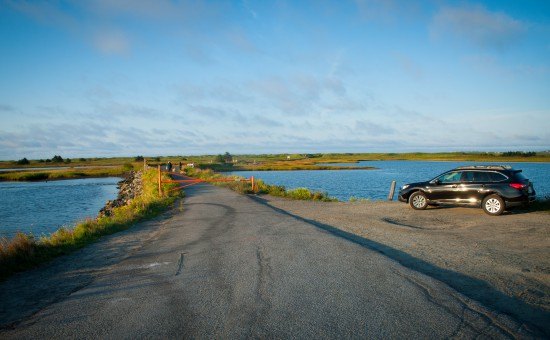



















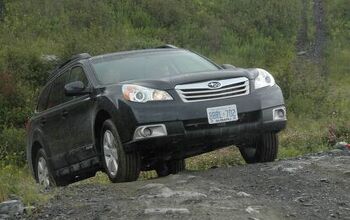
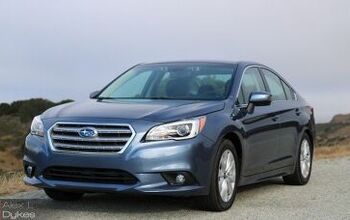
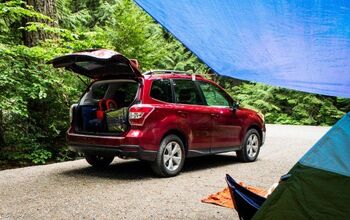
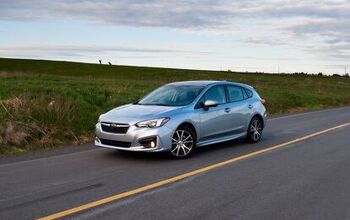










Comments
Join the conversation
I went and test drove a 2015 2.5 Limited yesterday. Nice car, impressive in many ways. But it couldn't get out of it's own way. It feels like it has a bowel blockage trying to push from 20-30 mph. I'm pretty sure that I could out-accelerate it on my bicycle. I complained to the salesman and he showed me how to put it into manual mode, which helped. But I would be doing this every time I pulled out of a parking lot and into a boulevard. Bear in mind, I have a 2006 Forester with the 2.5 and I think that has plenty of power, it's light on it's feet and can be fun. Of course if I want more power I can buy the $35,000 3.6 Limited (yeah, I'm a baron and want a moonroof and floor mats). I thought that this was the car I wanted but it's back to the drawing board.
I recently had a 2014 rental in Colorado. (I think it was a 2014.) Nice car, looks good, and I can see why to have one. Good clearance and it sits up well and was great on dirt roads! The interior at least for the rental was basic. Not a lot of power (however it was Colorado), but the mpg was impressive. I made the mistake of paying for the full tank and I had a hell of time trying to empty it over a three-day weekend.